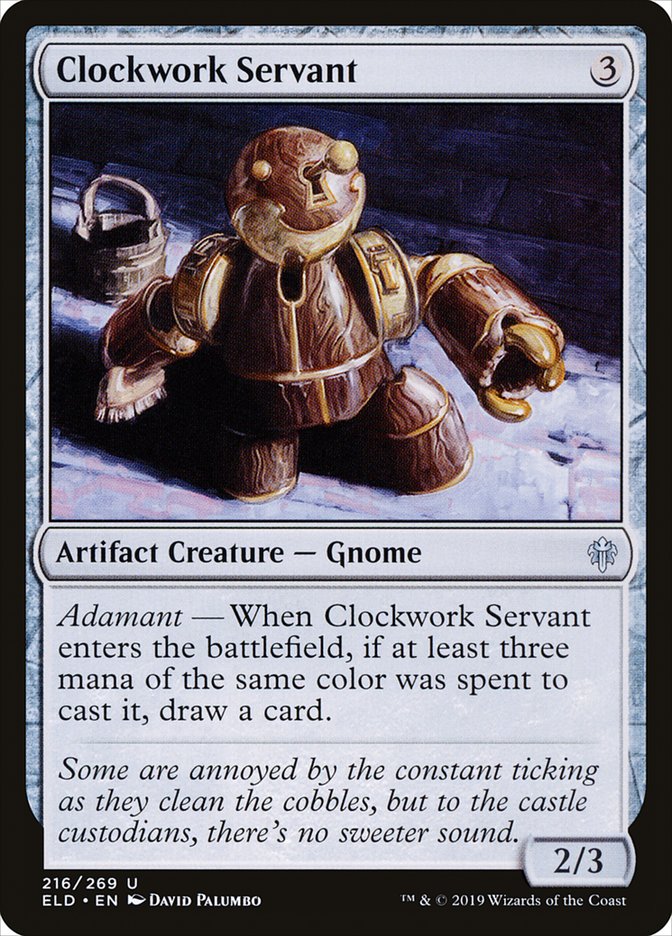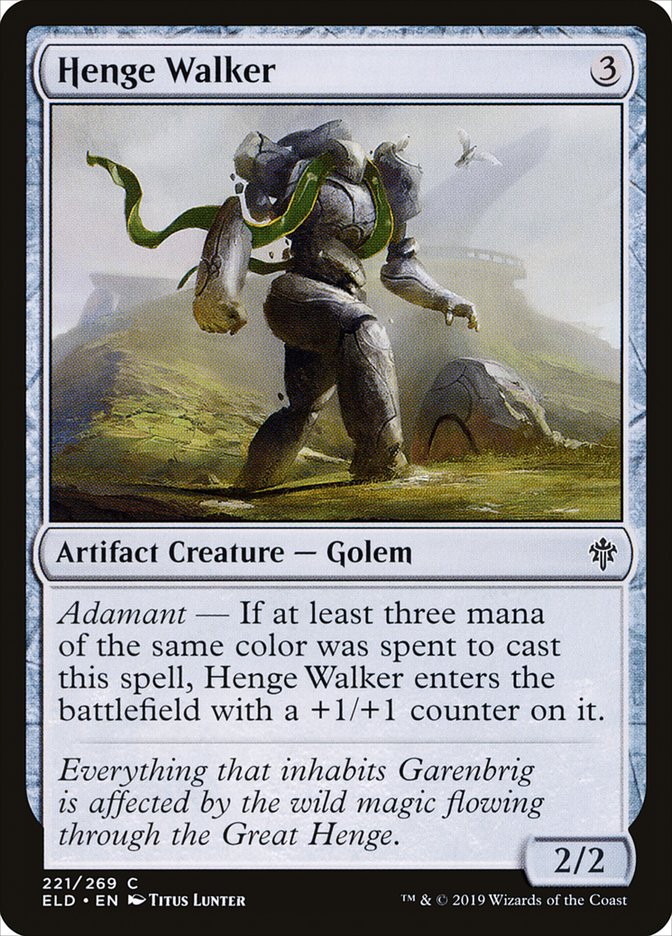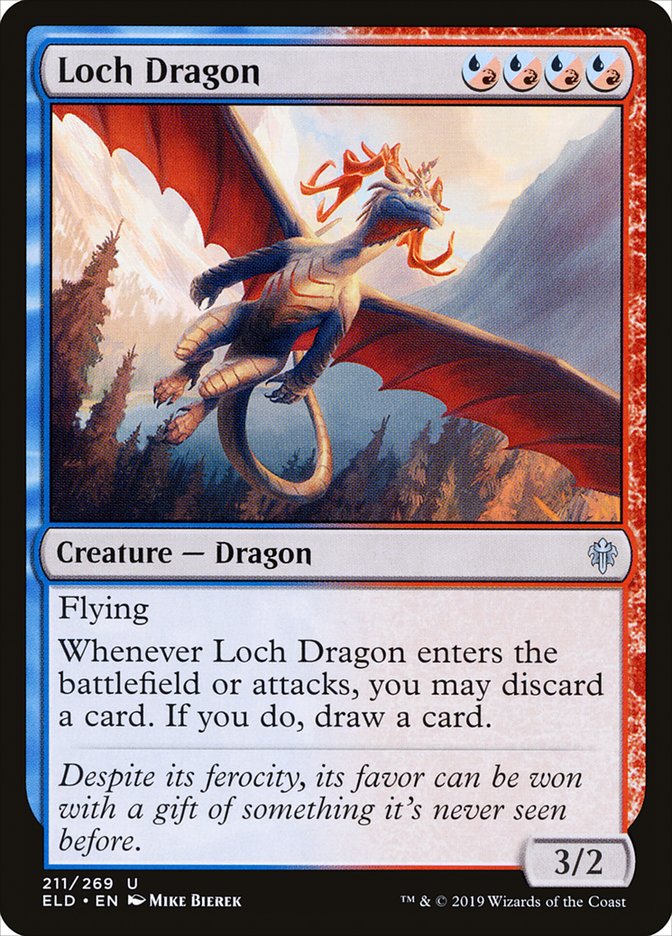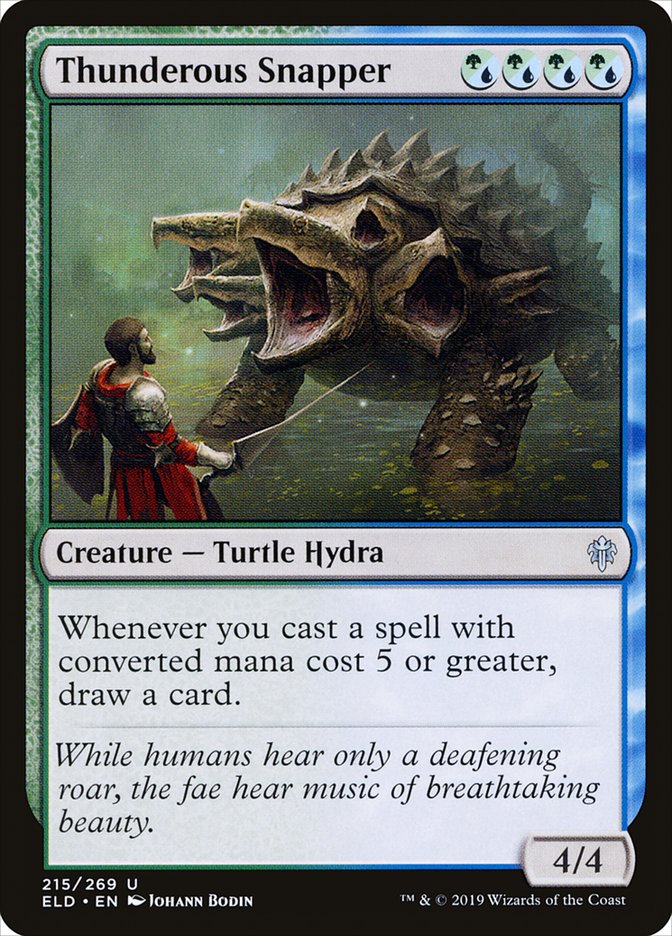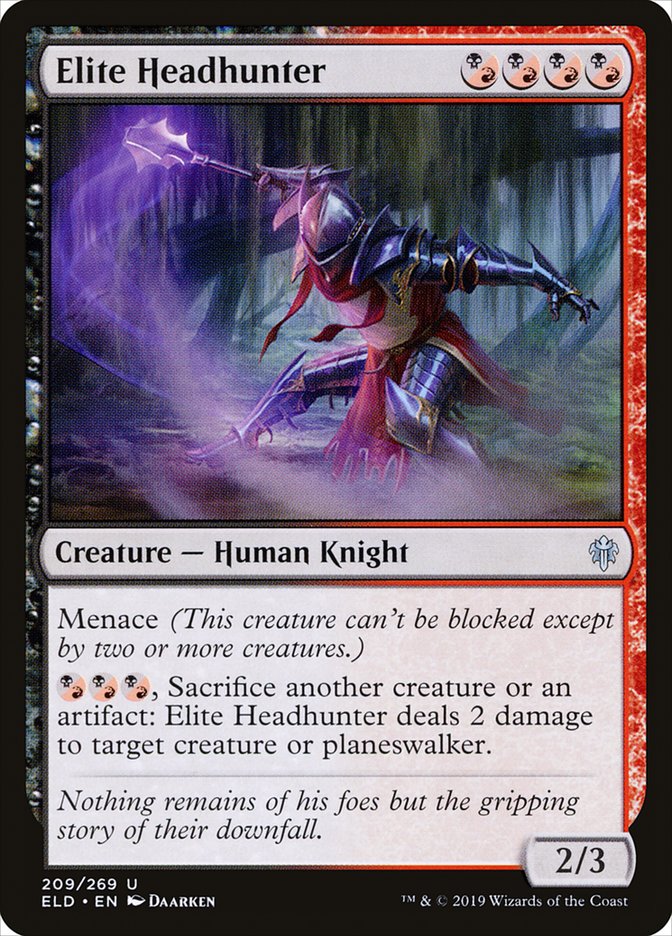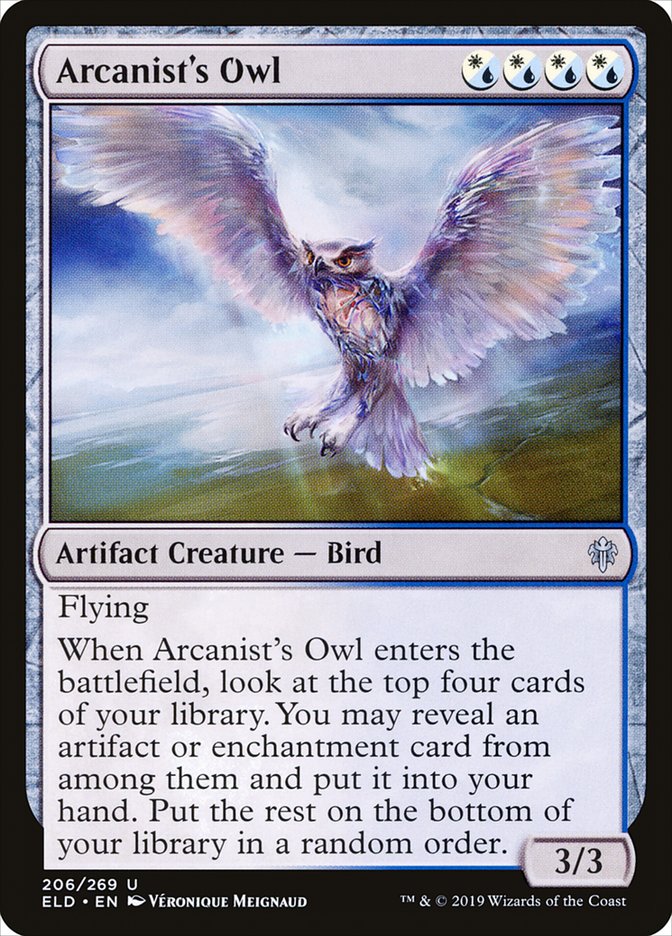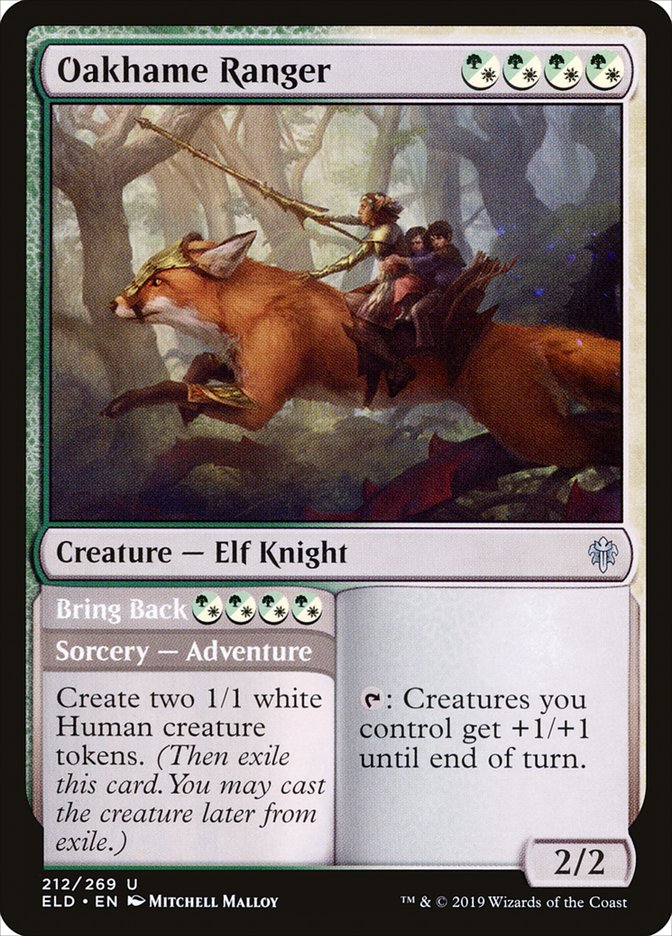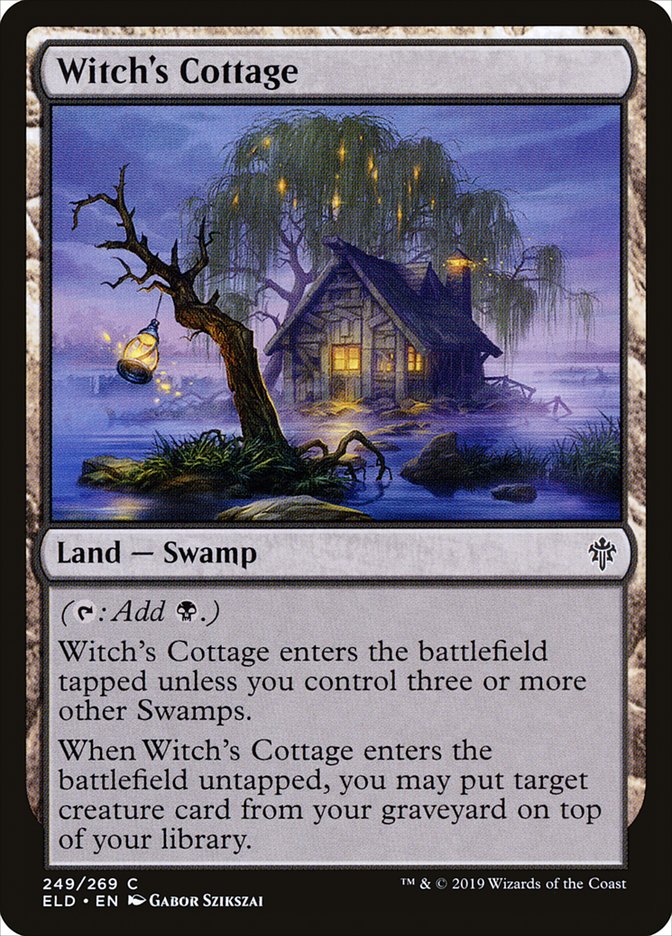In most Limited formats, it’s rarely optimal to draft a mono-color deck.
This isn’t because mono-color decks are inherently bad, but rather because
it’s not necessary to stay one color. Cards like Tempest Djinn and
Steel-Leaf Champion are few and far between in Limited. This means that the
difference between twelve sources of a color and seventeen sources of a
color isn’t that large; Hence, it’s often better to play a couple good
white cards in your mostly red deck than it is to play mono-red with some
sub-par playables. But Throne of Eldraine may be a different
beast.
drafts. The adamant mechanic, the quadruple-hybrid-mana-cost uncommons,
and higher density of artifacts all make mono-color decks more
reasonable.
– Andrew Brown in
this article.
This is exciting. As outlined in the article, many sets are tailored to
support two- or three-color decks in order to mitigate color imbalance. And
Wizards of the Coast is trying something new with this one in supporting
mono-color decks.
As a thought exercise, why do you think that all those mechanics “make
mono-color decks more reasonable”?
Consider the reason I previously outlined for the lack of mono-color decks
in the majority of Limited environments. There is no incentive to be
mono-color over a guild, and there is risk that the last playables are the
bottom of the barrel rather than reasonable filler. Adamant and the hybrid
cards fulfill the requirement of incentive, and the density of artifacts
suffices to increase the amount of playables mono-color decks have access
to.
Clockwork Servant and Henge Walker are the poster children for exactly what
Andrew was talking about. They’re playable, yet unexciting in most decks.
But in mono-color decks, Henge Walker is a fine inclusion and Clockwork
Servant is actively awesome. They’re artifacts, so they could be snapped up
by one of the artifacts matters drafters, but they’re meant as stepping
stones into mono-color decks. A problem with mono-color decks is that it’s
hard to get enough playables without starting down that road early. Cards
like Clockwork Servant help open the avenue to draft a mono-color deck
without committing to the specific color early on. I can’t recall a format
with an incentive structure this fluid with the drafting process, and I’m
incredibly excited to see how this affects the dynamics of the Draft
format.
Every guild has access to a four mana, quadruple-hybrid, uncommon. This
takes the statement of “mono-color decks should be draftable” to “every
mono-color deck should be draftable”. In Core Set 2020 and Dominaria, Mono-Red was one of the best archetypes. But it was
extremely rare to see other mono-color decks. Even in Theros, a
set with Devotion as an incentive mechanic, mono-color decks were not the
norm. And all the hints are pointing to at least one mono-color drafter per
table in Throne of Eldraine. I like how the hybrid cards are
powerful, but only aren’t bomb-level. They are good enough to provide
incentive to optimize their synergies and push towards a mono-color
archetype, but I won’t groan when my opponent plays one like I did with
Nightveil Predator.
One feature many of the top formats of all time have is a common cycle of
lands. However, the reason for that is that every deck can play them, and
the lands in the Witch’s Cottage cycle don’t have that feature. A tapped
land is a high cost, and for non mono-color decks, these lands likely won’t
make the cut.
And I actually think that’s a good thing. The theme of this article is
that, in order for mono-color decks to work, there needs to be both payoff
and incentive. If the payoff or incentive are grabbed by other drafters,
mono-color decks can’t thrive. Overall, I have faith that this will add a
fascinating and novel dynamic to Throne of Eldraine Limited. I
started off skeptical, but the more I think about it, the more I believe
this will cultivate a good Limited environment!


